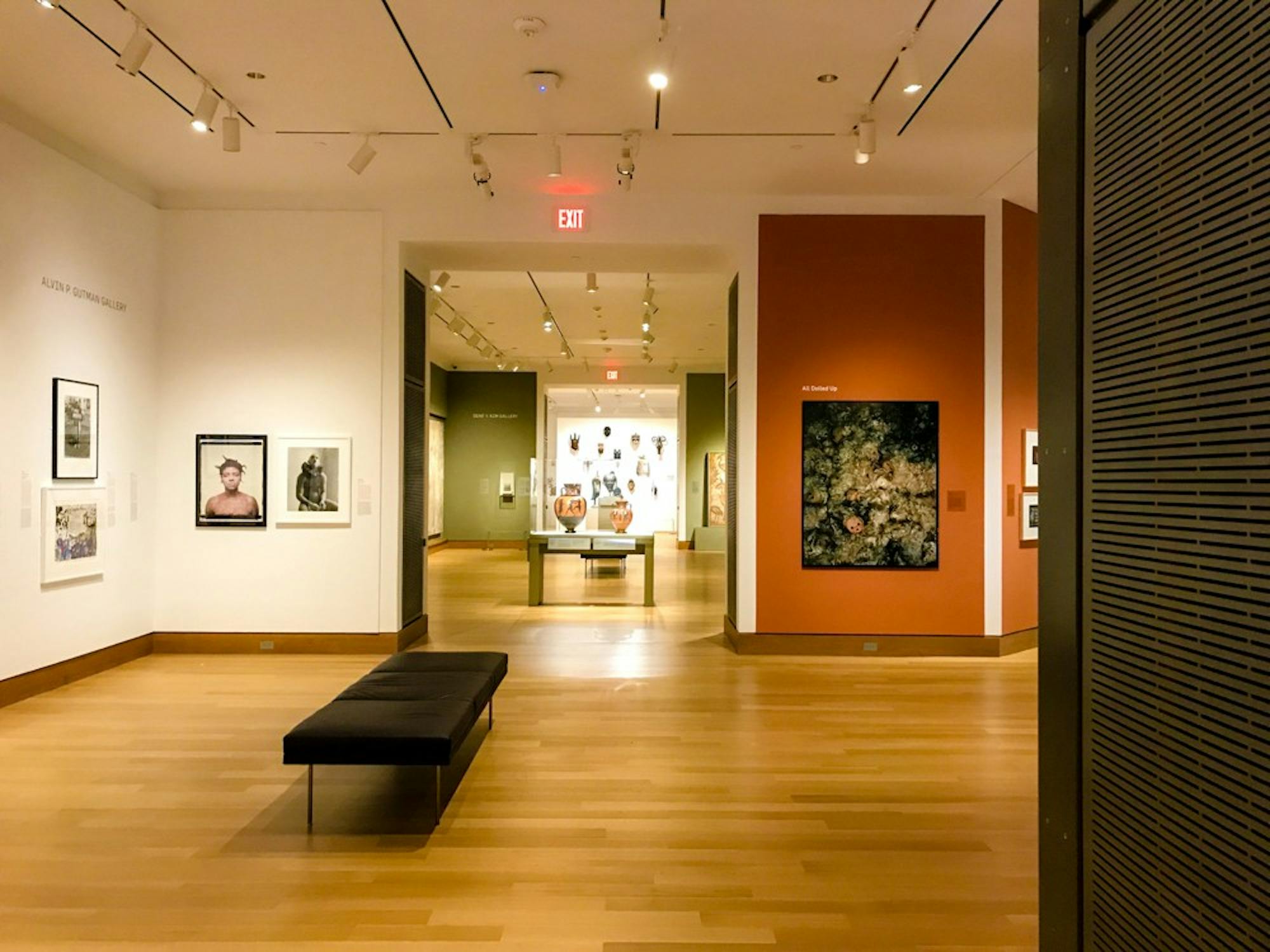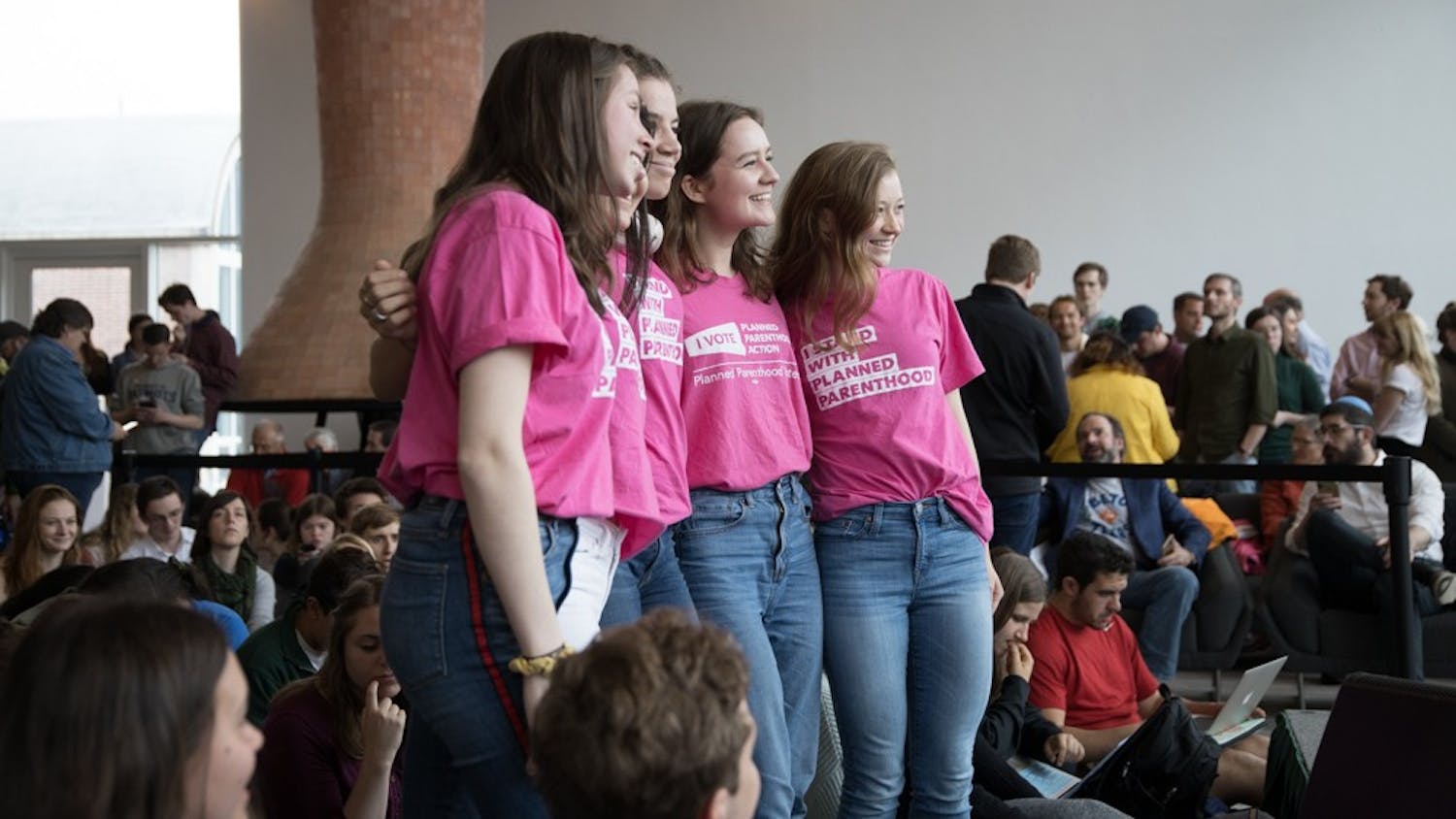The first set of Hood Museum senior interns in the newly-renovated museum have set a precedent for inclusion and innovation within the space. Besides the two Native American Art interns, who collaborated on creating an entire gallery, the six members of the Class of 2019 and one member of the Class of 2020 who participated in the internship program each put together their own exhibit or “Space for Dialogue” within an individual specialty.
Each intern was given the chance to choose works, arrange art, write accompanying captions for their show and prepare a gallery talk to introduce their exhibit. The Hood will display each exhibit for five weeks, and the first one was presented in May.
While putting together their exhibits, the interns said they felt that the Hood supported their visions. Many interns even had the chance to acquire new works for their shows.
Dillen Peace ’19, a Native American Art intern, said that this opportunity was a rare one because he feels the spaces on campus where Native American studies and art combine are lacking.
However, Peace said he tried to make this opportunity count, carefully thinking about how his message could reach all museum visitors effectively.
“No matter if it’s a sixth-grade student or an art historian, they both have a right to understand and both of their perspectives should be considered when writing the labels,” he said.
Peace added that any individual should feel empowered to engage with art.
“Sometimes people can be intimidated to engage in any kind of dialogue about works, to just have an opinion about certain works,” Peace said. “People tend to forget it is so subjective that your experience with the work is just as valid as anyone else’s. People are afraid to be wrong.”
Homma Family intern Victoria McCraven ’19, who worked with American art, said that she also wanted to make her exhibit more inclusive.
“I want to engage more communities and new artists at Dartmouth because I think sometimes people think that [the arts are] only for certain people,” McCraven said.
At the same time, she said struggled to summarize her feelings about the art in a way that was readily accessible to visitors.
“It was really challenging to portray what I’ve been working on for almost nine months in just a matter of 150 words,” McCraven said.
Levinson intern Jules Wheaton ’19, who worked on campus engagement, said she similarly grappled with the presentation of information to the public. Wheaton expressed concern over not giving one absolute interpretation of the artist’s intentions but also highlighting the themes that are relevant to her exhibit. “Sometimes I feel like I don’t have the authority to speak on behalf of the art or the artists,” Wheaton said.
Although not an artist herself, Wheaton said she feels a deep understanding of the arts.
Armando Pulido ’19, a Class of 1954 curatorial intern who worked with global contemporary art, likewise expressed a feeling of responsibility to the artist and the viewer.
“You feel like you have a sense of authority over the works and you want to make sure you’re telling the story right,” Pulido said. “You have that power over the public, in a sense.”
Pulido’s exhibit, which is the first to be on display in the museum, is the first Hood exhibit to include labels in both English and Spanish. He said he wants to cater to a new audience that often gets forgotten in the Hanover area.
Wheaton said that one of her focuses is on bringing in people who might not be interested in going to museums without encouragement. She added that there are a lot of soft entry points into the Hood, such as class visits to see different collections, so anyone and everyone on campus is now aware of the museum.
Additionally, McCraven added that publicity in the fall before the museum reopened contributed to campus fascination with the Hood.
“I think we made people really interested to see what we were doing,” McCraven said.
After realizing how important the Hood could be on campus, the interns wanted to make an impact through their work. Being an intern “seemed like the best way to be entirely involved with [the museum],” Wheaton said.
Some of the interns also see their job as valuable work experience.
“As a Hood intern, you’re in the workforce in a way,” McCraven said.
Wheaton became a Hood intern after being an intern at the Hopkins Center for the Arts the year before and similarly engaging students in programming. She said the chance to combine art with communications was a great opportunity to experience what working in a museum would actually be like.
“It’s the most real job that I found on campus,” Wheaton said. “I’m not just doing my homework and getting paid — I’m seriously contributing to the museum and to our external efforts to an actual exhibit that’s going to be on display.”
McCraven encouraged other Dartmouth students to consider doing the internship even if they do not already have a background in art.
“You don’t have to be an art expert to do the internship,” said McCraven, who only began taking art history classes in her junior year.
According to the current interns, their time at the Hood has been valuable both academically and professionally.
“It was the best professional experience I can imagine and, academically, was something concrete to conclude my Dartmouth experience,” Wheaton said.
Throughout their time at the Hood, the interns learned the value of working creatively and collaboratively — lessons that they will take with them after college.
“I think you can never stop learning how to be a good curator, good researcher or good colleague or collaborator,” Pulido said.




